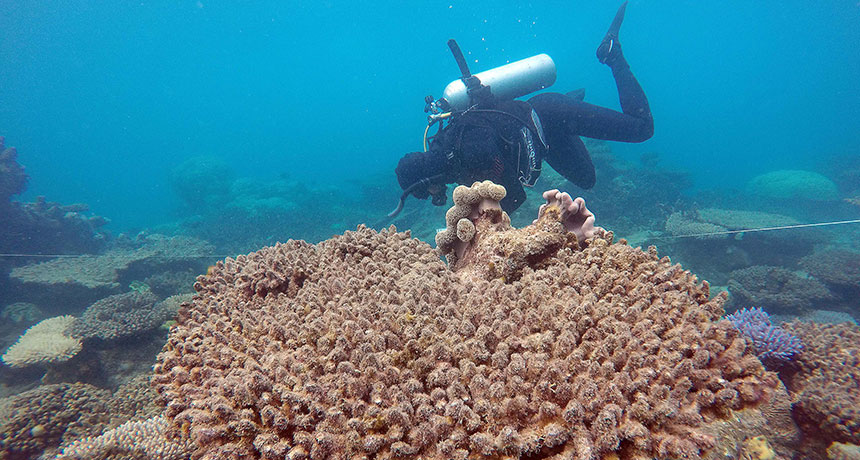Coral die-off in Great Barrier Reef reaches record levels

Tourists planning a visit to northern portions of the Great Barrier Reef should be prepared for some sad sights. On average, two-thirds of the nearshore coral in the mostly pristine area north of Port Douglas, Australia, has been pronounced dead by scientists who have surveyed the reef. It’s the largest coral die-off ever recorded in Great Barrier Reef history, researchers from the ARC Center of Excellence for Coral Reef Studies at James Cook University in Townsville, Australia, report.
Water temperatures off Australia rose to levels dangerous to corals starting in 2014 as a result of global warming and El Niño. In response, the corals began expelling the symbiotic algae that provide them with food, causing what is known as bleaching. In March, at the height of the bleaching event, scientists started monitoring dozens of reefs throughout the Great Barrier Reef through underwater and aerial surveys. They found huge losses in parts of the northern reef but far less damage elsewhere.
“It was a lot hotter than usual up north and not so hot down south,” notes Andrew Baird, one of the ARC Center researchers behind the new findings.
Only about a quarter of the coral in northern reefs found farther offshore died. There, the corals may have been aided by the upwelling of cooler water from the depths of the Coral Sea. And south of Port Douglas, many of the corals that had undergone bleaching appear to have recovered, regaining their algal helpers — and their brilliant colors. The cloud cover and wind from a cyclone that passed over this section of the reef in March may have brought down temperatures there, Baird says.
Many fish depend on coral reefs for food and shelter, Baird notes, and they will probably be in decline in reefs where much of the coral has died. But there is good news, too, he says: Those southern reefs should be able to provide young corals to assist with recovery in the north. And Baird has heard from colleagues that many juvenile corals survived the bleaching event and that, he says, “is also a potential source of recovery.”